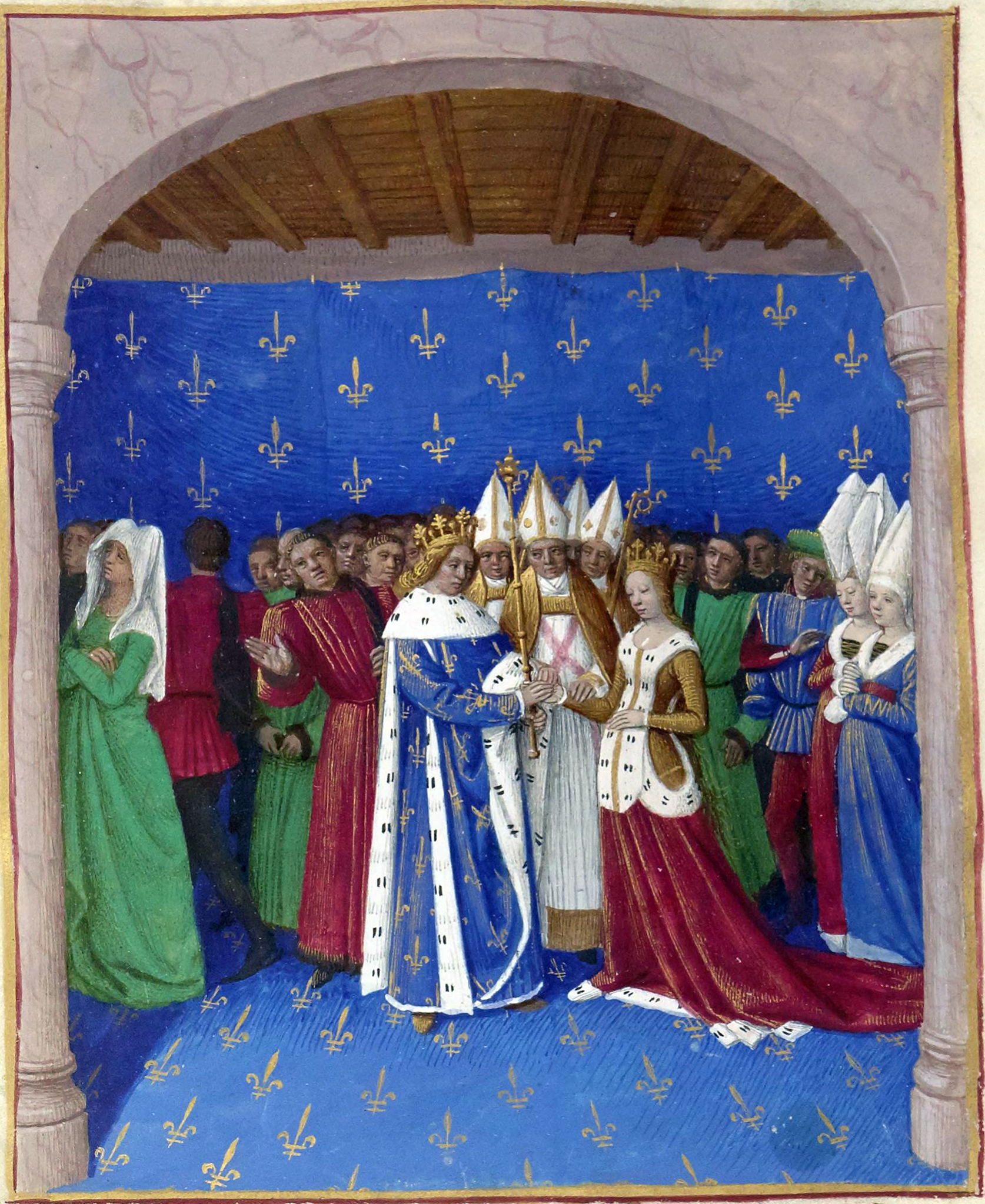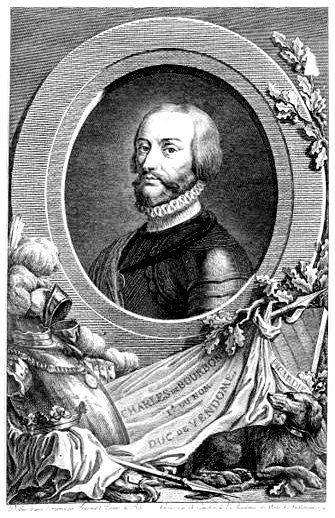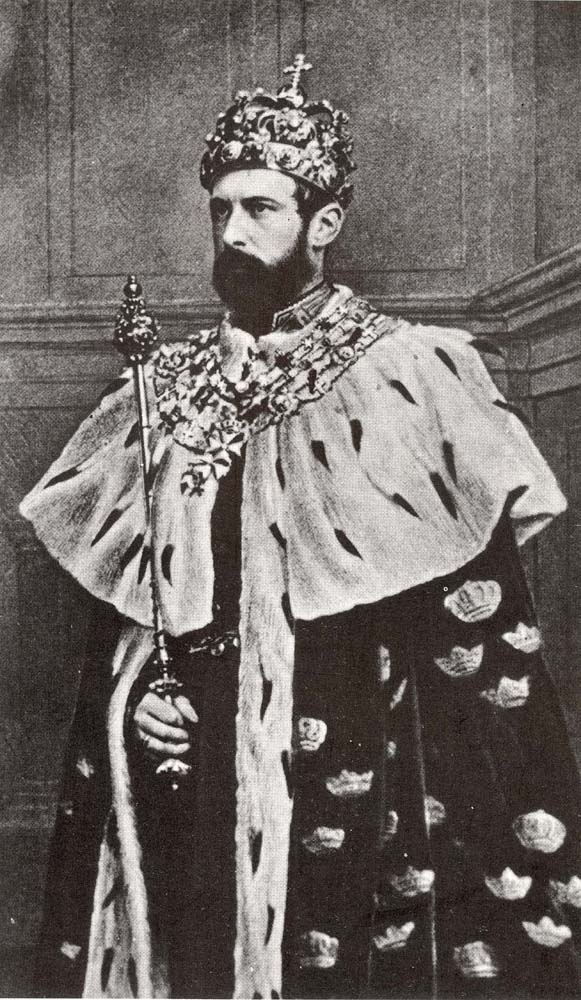|
Karl IV
Charles IV may refer to: * Charles IV of France (1294–1328), "the Fair" * Charles IV, Holy Roman Emperor (1316–1378) * Charles IV of Navarre (1421–1461) * Charles IV, Duke of Anjou (1446–1481) * Charles IV, Duke of Alençon (1489–1525) * Charles, Duke of Vendôme (1489–1537), also known as Charles IV de Bourbon * Charles V, Holy Roman Emperor (1500–1558), King of Naples as Charles IV * Charles IV, Duke of Lorraine (1604–1675) * Charles VI, Holy Roman Emperor (1685–1740), Duke of Brabant and King of Sicily as Charles IV * Charles Emmanuel IV of Sardinia (1751–1819), styled "Charles IV of England and Scotland" by Jacobites * Charles IV of Spain (1748–1819) * Charles IV of Norway (1826–1872) * Charles IV of Hungary (1887–1922) See also * King Charles (other) King Charles may refer to: Kings A number of kings of Albania, Alençon, Anjou, Austria, Bohemia, Croatia, England, France, Holy Roman Empire, Hungary, Ireland, Jerusalem, Naples, Navarre, N ... [...More Info...] [...Related Items...] OR: [Wikipedia] [Google] [Baidu] |
Charles IV Of France
Charles IV (18/19 June 1294 – 1 February 1328), called the Fair (''le Bel'') in France and the Bald (''el Calvo'') in Navarre, was last king of the direct line of the House of Capet, King of France and King of Navarre (as Charles I) from 1322 to 1328. Charles was the third son of Philip IV; like his father, he was known as "the fair" or "the handsome".Kibler, p.201. Beginning in 1323 Charles was confronted with a peasant revolt in Flanders, and in 1324 he made an unsuccessful bid to be elected Holy Roman Emperor. As Duke of Guyenne, King Edward II of England was a vassal of Charles, but he was reluctant to pay homage to another king. In retaliation, Charles conquered the Duchy of Guyenne in a conflict known as the War of Saint-Sardos (1324). In a peace agreement, Edward II accepted to swear allegiance to Charles and to pay a fine. In exchange, Guyenne was returned to Edward but with a much-reduced territory. When Charles IV died without a male heir, the senior line of th ... [...More Info...] [...Related Items...] OR: [Wikipedia] [Google] [Baidu] |
Charles IV, Holy Roman Emperor
Charles IV ( cs, Karel IV.; german: Karl IV.; la, Carolus IV; 14 May 1316 – 29 November 1378''Karl IV''. In: (1960): ''Geschichte in Gestalten'' (''History in figures''), vol. 2: ''F–K''. 38, Frankfurt 1963, p. 294), also known as Charles of Luxembourg, born Wenceslaus (, ), was the first King of Bohemia to become Holy Roman Emperor. He was a member of the House of Luxembourg from his father's side and the Bohemian House of Přemyslid from his mother's side; he emphasized the latter due to his lifelong affinity for the Bohemian side of his inheritance, and also because his direct ancestors in the Přemyslid line included two saints. He was the eldest son and heir of John of Bohemia, King of Bohemia and Count of Luxembourg, who died at the Battle of Crécy on 26 August 1346. His mother, Elizabeth, Queen of Bohemia, was the sister of Wenceslaus III, King of Bohemia and Poland, the last of the male Přemyslid rulers of Bohemia. Charles inherited the County of Luxemb ... [...More Info...] [...Related Items...] OR: [Wikipedia] [Google] [Baidu] |
Charles IV Of Navarre
Charles, Prince of Viana ( eu, Karlos IV.a) (29 May 1421 – 23 September 1461), sometimes called Charles IV of Navarre, was the son of King John II of Aragon and Queen Blanche I of Navarre. Background His mother was the daughter and heiress of Charles III, King of Navarre. Both his grandfather Charles and his mother, who ruled over Navarre from 1425 to 1441, had bequeathed this kingdom to Charles, whose right had also been recognized by the Cortes; but when Blanche died in 1441 her husband John seized the kingdom to the exclusion of his son. Marriage The Prince of Viana was married in Olite (Navarre) on 30 September 1439, taking as his wife Agnes of Cleves (1422–1446), the daughter of Adolph I, Duke of Cleves and Mary of Burgundy; sister of Philip III "the Good", Duke of Burgundy. Agnes died, childless, on 6 April 1448, eight years after her marriage to Charles, aged only about twenty-six. After her death, the prince took a mistress, Brianda de Vaca, and by her had an illegi ... [...More Info...] [...Related Items...] OR: [Wikipedia] [Google] [Baidu] |
Charles IV, Duke Of Anjou
Charles IV, Duke of Anjou, also Charles of Maine, Count of Le Maine and Guise (1446 – 10 December 1481) was the son of the Angevin prince Charles of Le Maine, Count of Maine and Isabelle of Luxembourg. He succeeded his father as Count of Maine, Guise, Mortain and Gien in 1472. He succeeded his uncle René I of Naples in 1480 as fourth Duke of Anjou and Count of Provence, according to the will of René, who had no surviving son. René's surviving daughter Yolande received Bar and was already Duchess of Lorraine. He also used the title of Duke of Calabria, in token of the claims to Naples he inherited from René. In 1474 he married Joan of Lorraine (1458 – 25 January 1480), daughter of Frederick II of Vaudémont, but they had no children. He died on 10 December 1481. He willed his inheritance to his cousin Louis XI of France, whose heirs thus obtained a claim to the affairs of Italy, pursued in the next decades. Notes References * * See also *Counts and Dukes of Anjou *C ... [...More Info...] [...Related Items...] OR: [Wikipedia] [Google] [Baidu] |
Charles IV, Duke Of Alençon
Charles IV of Alençon (2 September 1489 in Alençon – 11 April 1525 in Lyon) was the son of René of Alençon and Margaret of Vaudémont. He succeeded his father in 1492 as Duke of Alençon and Count of Perche, and was also Count of Armagnac, Fézensac, Viscount of Rodez, Count of Fezensaguet, l'Isle-Jourdain, and Perdiac. In 1509 he married Margaret of Angoulême, sister to Francis, Duke of Valois, who would in 1515 become King Francis I of France. Their marriage was childless: his wife was allowed to retain most of his titles. As first prince of the blood, Charles was a prominent figure in the early part of his brother-in-law's reign. Made governor of Normandy, Charles fought at Marignano in 1515, and in 1521 defended Champagne against an imperial invasion. He accompanied his brother-in-law, King Frances I of France, on his second expedition to Italy in 1525, and after the disaster at Pavia, took command of the defeated French forces, leading them in retreat back to ... [...More Info...] [...Related Items...] OR: [Wikipedia] [Google] [Baidu] |
Charles, Duke Of Vendôme
Charles de Bourbon (2 June 1489 – 25 March 1537) was a French '' prince du sang'' and military commander at the court of Francis I of France. Biography Charles was born at the Château de Vendôme, eldest son of Francis de Bourbon, Count of Vendôme and Marie of Luxembourg. Charles succeeded his father as Count of Vendôme in 1495. Charles's first military service was in Italy, under King Louis XII of France. In 1514, he was created Duke of Vendôme when the county of Vendôme was elevated into a duchy. He fought at the Battle of Marignano (1515) and participated in the Flemish campaign. Because of his loyalty to the King, he was appointed head of the council when King Francis I was captured at the Battle of Pavia. Marriage and issue On 18 May 1513, Charles married Françoise d'Alençon, eldest daughter of René, Duke of Alençon and Margaret of Lorraine. They had: # Louis de Bourbon (1514–1516), died in infancy. # Marie de Bourbon (1515–1538), unmarried, prospective ... [...More Info...] [...Related Items...] OR: [Wikipedia] [Google] [Baidu] |
Charles V, Holy Roman Emperor
Charles V, french: Charles Quint, it, Carlo V, nl, Karel V, ca, Carles V, la, Carolus V (24 February 1500 – 21 September 1558) was Holy Roman Emperor and Archduke of Austria from 1519 to 1556, King of Spain (Crown of Castile, Castile and Crown of Aragon, Aragon) from 1516 to 1556, and Lord of the Netherlands as titular Duke of Burgundy from 1506 to 1555. He was heir to and then head of the rising House of Habsburg during the first half of the 16th century, his dominions in Europe included the Holy Roman Empire, extending from Kingdom of Germany, Germany to Kingdom of Italy (Holy Roman Empire), northern Italy with direct rule over the Austrian hereditary lands and the Burgundian Low Countries, and Habsburg Spain, Spain with its southern Italy, southern Italian possessions of Kingdom of Naples, Naples, Kingdom of Sicily, Sicily, and Kingdom of Sardinia, Sardinia. He oversaw both the continuation of the long-lasting Spanish colonization of the Americas and the short-live ... [...More Info...] [...Related Items...] OR: [Wikipedia] [Google] [Baidu] |
Charles IV, Duke Of Lorraine
Charles IV (5 April 1604, Nancy – 18 September 1675, Allenbach) was Duke of Lorraine from 1624 until his death in 1675, with a brief interruption in 1634, when he abdicated under French pressure in favor of his younger brother, Nicholas Francis. Life He came to lose his duchy because of his notionally anti-French policy; in 1633, French troops invaded Lorraine in retaliation for Charles's support of Gaston d'Orléans—who repeatedly plotted against Richelieu's governance of France under the childless Louis XIII and treated dangerously with its enemies as a young heir presumptive—and Richelieu's policies were always anti-Habsburg so as to increase the strength and prestige of France at the expense of the two dynasties. Gaston d'Orléans, frequently sided with either branch of the Habsburg family against Richelieu, who was ''de facto'' ruler of France as its Chief Minister, and had to flee several times to avoid charges and trial for treason. His allies and confederates gene ... [...More Info...] [...Related Items...] OR: [Wikipedia] [Google] [Baidu] |
Charles VI, Holy Roman Emperor
, house = Habsburg , spouse = , issue = , issue-link = #Children , issue-pipe = , father = Leopold I, Holy Roman Emperor , mother = Eleonore Magdalene of Neuburg , birth_date = , birth_place = Hofburg Palace, Vienna , death_date = , death_place = Palais Augarten, Vienna , place of burial = Imperial Crypt , signature = Signatur Karl VI. (HRR).PNG , religion = Roman Catholicism Charles VI (german: Karl; la, Carolus; 1 October 1685 – 20 October 1740) was Holy Roman Emperor and ruler of the Austrian Habsburg monarchy from 1711 until his death, succeeding his elder brother, Joseph I. He unsuccessfully claimed the throne of Spain following the death of his relative, Charles II. In 1708, he married Elisabeth Christine of Brunswick-Wolfenbüttel, by whom he had his four children: Leopold Johann (who died in infancy), Maria Theresa (the last direct Habsburg sovereign), Mar ... [...More Info...] [...Related Items...] OR: [Wikipedia] [Google] [Baidu] |
Charles Emmanuel IV Of Sardinia
Charles Emmanuel IV (Carlo Emanuele Ferdinando Maria; 24 May 1751 – 6 October 1819) was King of Sardinia from 1796 to 1802. He abdicated in favour of his brother Victor Emmanuel I. Biography Carlo Emanuele Ferdinando Maria di Savoia was born in Turin, the eldest son of Victor Amadeus III, King of Sardinia, and of his wife Infanta Maria Antonia Ferdinanda of Spain. From his birth to his own succession to the throne of Sardinia in 1796, Charles Emmanuel was styled " Prince of Piedmont". In 1775, Charles Emmanuel married Marie Clotilde of France, the daughter of Louis, Dauphin of France and Princess Marie-Josèphe of Saxony, and sister of King Louis XVI of France. Although the union was arranged for political reasons, Charles Emmanuel and his wife became devoted to each other. Their attempts to have children, however, were unsuccessful. At the death of his father (14 October 1796), Charles Emmanuel succeeded as King of Sardinia. The kingdom included not only the island ... [...More Info...] [...Related Items...] OR: [Wikipedia] [Google] [Baidu] |
Charles IV Of Spain
, house = Bourbon-Anjou , father = Charles III of Spain , mother =Maria Amalia of Saxony , birth_date =11 November 1748 , birth_place =Palace of Portici, Portici, Naples , death_date = , death_place =Palazzo Barberini, Rome, Papal States , burial_place =El Escorial , religion =Roman Catholic , signature =Charles IV of Spain signature.svg Charles IV (Carlos Antonio Pascual Francisco Javier Juan Nepomuceno José Januario Serafín Diego) 11 November 1748 – 20 January 1819) was King of Spain and ruler of the Spanish Empire from 1788 to 1808. The Spain inherited by Charles IV gave few indications of instability, but during his reign, Spain entered a series of disadvantageous alliances and his regime constantly sought cash to deal with the exigencies of war. He detested his son and heir Ferdinand, who led the unsuccessful El Escorial Conspiracy and later forced Charles's abdication after the Tumult of Aranjuez in Marc ... [...More Info...] [...Related Items...] OR: [Wikipedia] [Google] [Baidu] |
Charles IV Of Norway
Charles XV also Carl (''Carl Ludvig Eugen''); Swedish: ''Karl XV'' and Norwegian: ''Karl IV'' (3 May 1826 – 18 September 1872) was King of Sweden (''Charles XV'') and Norway, there often referred to as Charles IV, from 8 July 1859 until his death in 1872. Though known as King Charles XV in Sweden (and also on contemporary Norwegian coins), he was actually the ninth Swedish king by that name, as his predecessor Charles IX (reigned 1604–1611) had adopted a numeral according to a fictitious history of Sweden. Charles XV was the third Swedish monarch from the House of Bernadotte and the first one to be born in Sweden. Biography Early life He was born in Stockholm Palace, Stockholm, in 1826 and dubbed Duke of Scania at birth. Born the eldest son of Crown Prince Oscar of Sweden and his wife Crown Princess Josephine, he would be second in line to the throne of his grandfather, the ruling King Charles XIV John of Sweden. During his childhood he was placed in the care of th ... [...More Info...] [...Related Items...] OR: [Wikipedia] [Google] [Baidu] |






